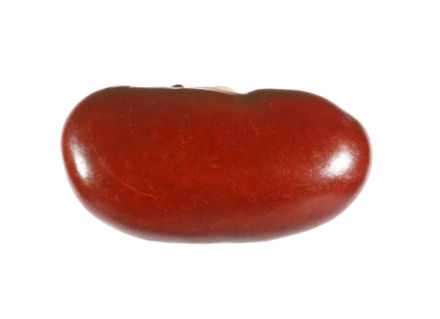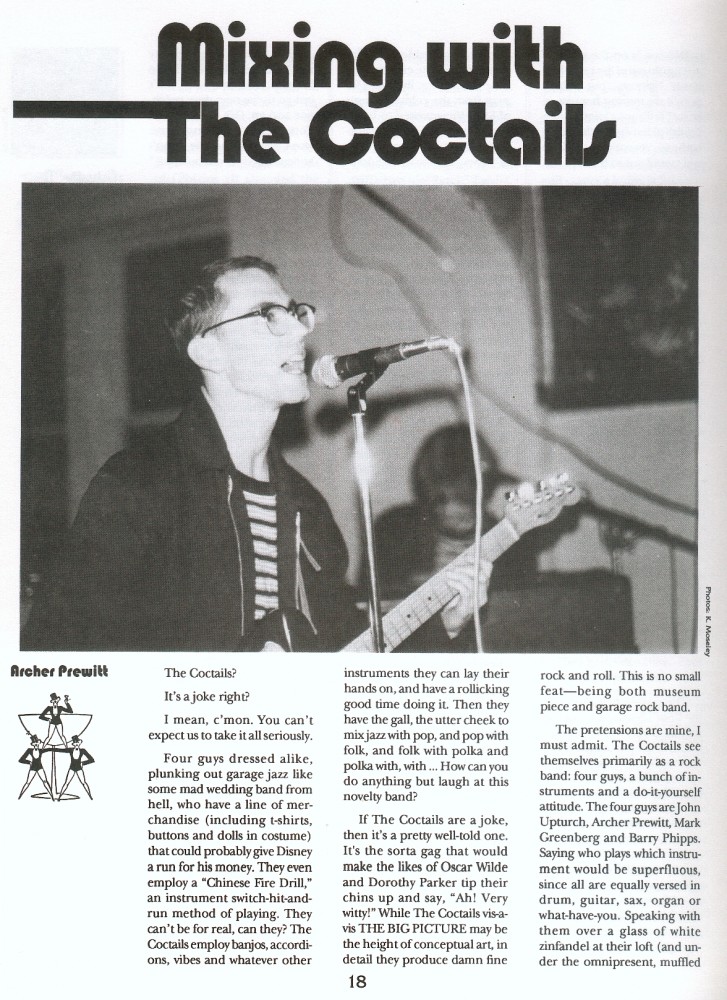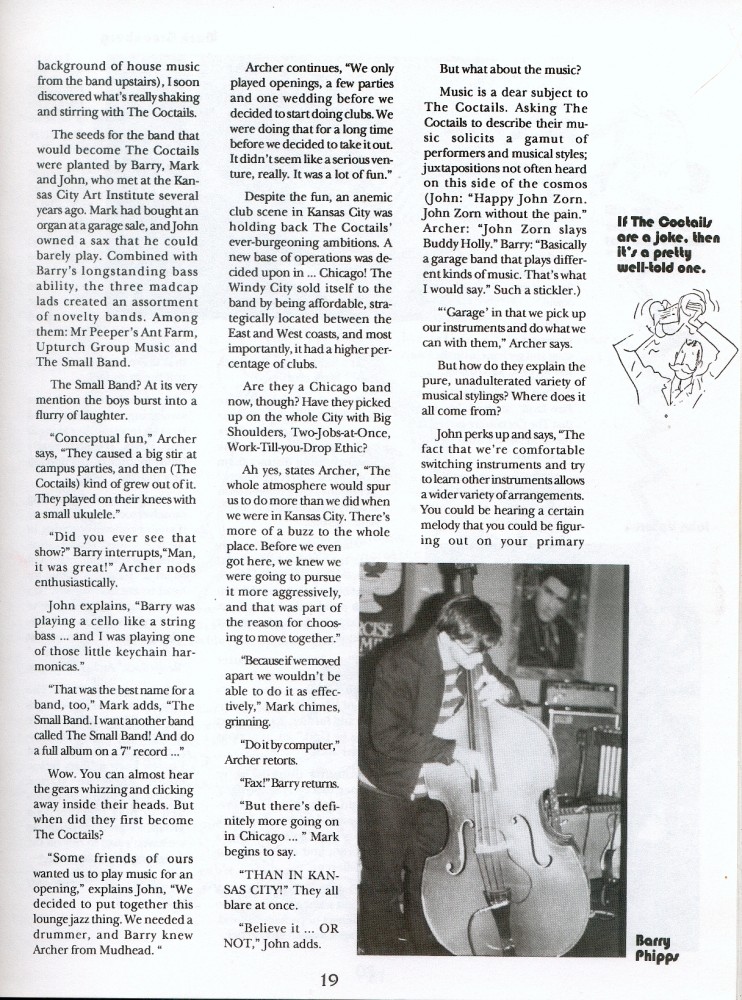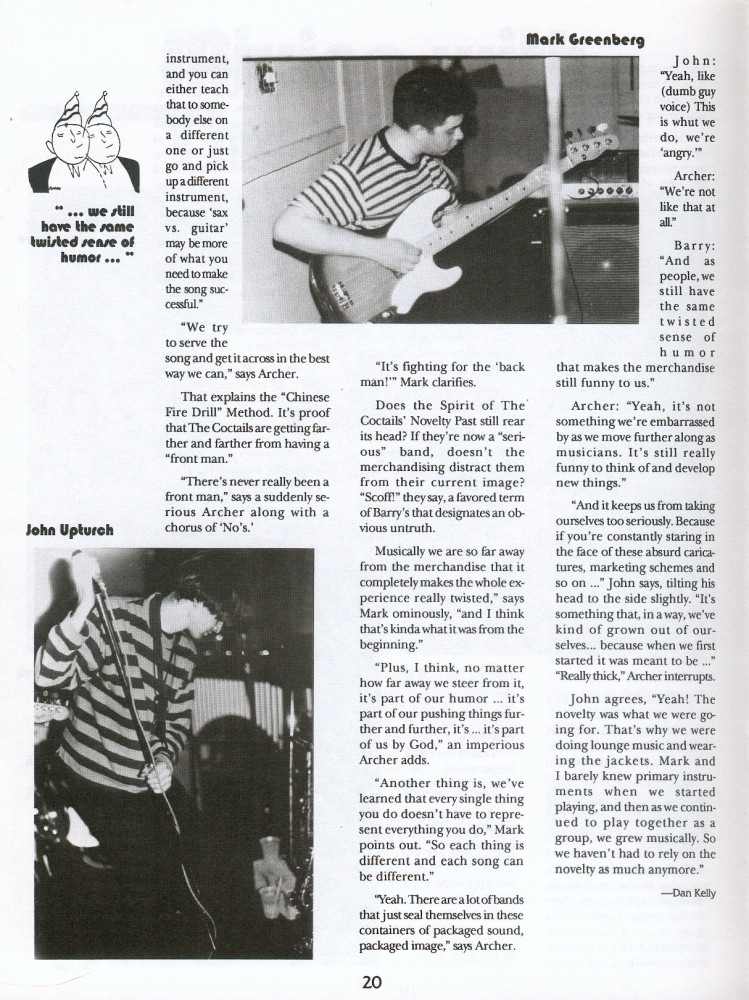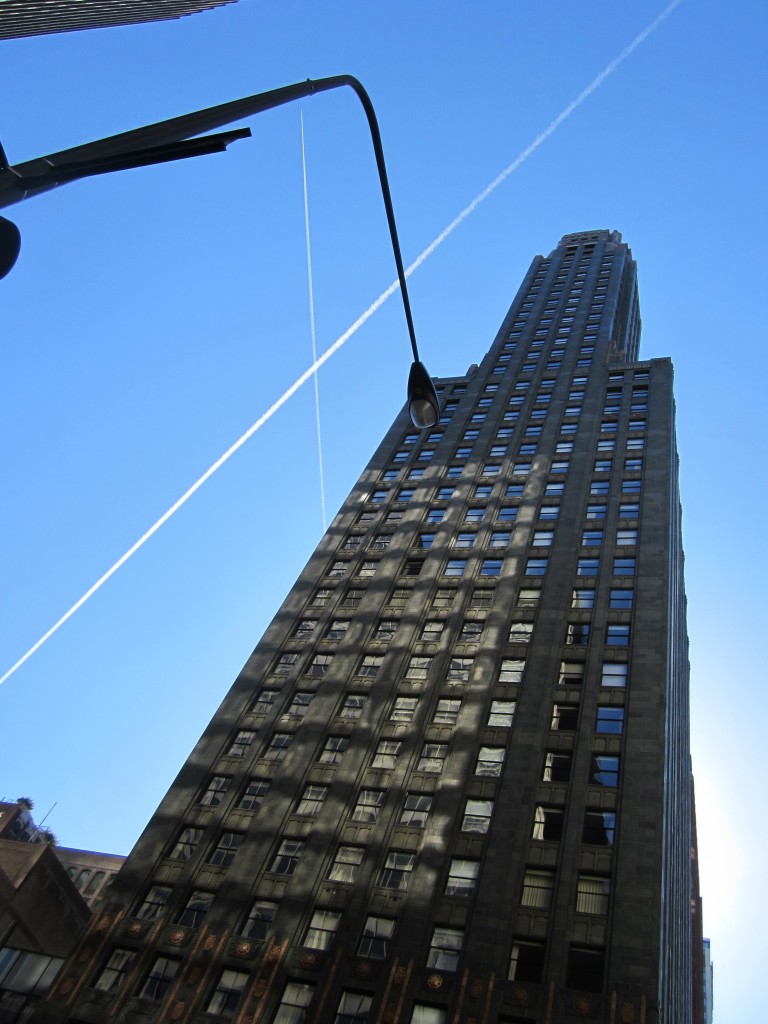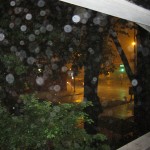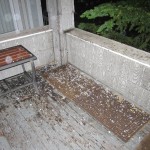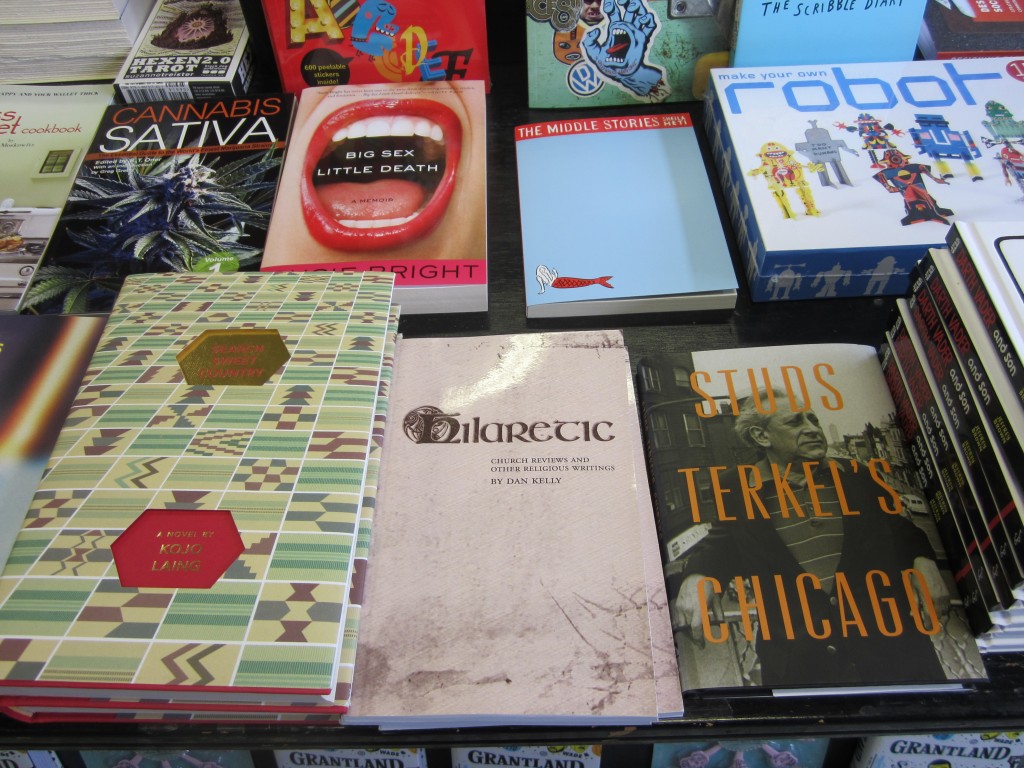Another piece from my stint as a church reviewer with the Chicago Journal. I visited the center and wrote this a week or so after the attacks. My Islam knowledge came from the Internet and a book about salat. Find this and other church reviews/religious essays in my book Hilaretic.
Downtown Islamic Center
218 S. Wabash Ave, #500
J’uma Friday Afternoon Prayer (Salat) Service
Minarets are not apparent at the Downtown Islamic Center. Nothing, in fact, marks the building as extraordinary, or even as the site of a house of worship, much less a mosque. Throughout the city, churches and cathedrals stand at every other street corner, defiantly pointing their steeples skywards, declaring that the Windy City is largely composed of followers of Catholic and Baptist followers of the Nazarene. Chicago has mosques, but these reside in the city’s outlands. If you seek a mosque in the city’s heart, you must look closely, and upwards, several floors above the sidewalk.
The Downtown Islamic Center isn’t much to look at from the outside. Occupying one of the Loop’s many faceless office buildings, it lacks the exotic glory conjured up when one thinks of the word “mosque.” The building face is not gilded in gold, topped by onion domes and weather vane crescents, and tattooed in Arabic script. Arriving, in fact, it took an invigorating (i.e. exhausting) trip up five flights of stairs before I saw the barest symbols of Islam.
Wiping my sweaty brow with my sleeve with much shanty Irish class, I felt my usual sinking sensation of not knowing enough to avoid grievously offending the regular attendees and/or their ancestors and way of life. As a change, while in most houses of worship I feel only a slightly slippery sensation beneath my feet, here the ground wholly disappears.
Well, not entirely. Islam shares several common elements with Christianity and Judaism. Most of the stars of the Hebrew and Christian Bibles—Adam, Abraham, Moses, David, and Jesus—are respected as prophets of Allah, who, like YHWH, is the one true God with his attendant omnipotence, omniscience, and impeccable taste in worshippers. Where Muslims veer off, however, is in their ultimate respect to the Prophet Muhammad (peace be upon him), deliverer of the Qur’an, the final word from God. Jesus is just all right with Muslims, but Muhammad (pbuh) is the loci of the faith.
As for other differences—among too many to list here—while the Five Pillars of Islam feature the usual edicts about leading a virtuous life through prayer and charitable works, Muslims are also beholden to visit Mecca at least once in their lives, fast during the month of Ramadan, and pray five times a day. Friday afternoon prayer, or jum’a, was the prayer service I was interested in most. Muslim prayer can be and usually is performed anywhere and alone, but the congregational jum’a service is an exception—though not by much. The Islamic prayer service or Salat is a series of prayers and movements set since Muhammad (pbuh) first dictated them. Watching these same activities—shared and performed for 1,400 years—re-enacted in the immediate vicinity by 100 men was nothing less than startling.
But as I was saying, all my previous Internet study escaped me in the general hubbub of the fifth floor. Most of the conversations I hear were in unidentifiable languages, though it’s safe to say Arabic, Indian, and Indonesian tongues wouldn’t be too hazardous a guess. The air was rich with the scent of cardamon, coriander, and other spices. Food—some sort of rice dish and pita bread—was ladled out in front of the book store in back. The crowd was lively, but I wouldn’t describe it as gaiety. More likely it was fellowship, the feeling of security and ease at being surrounded by your brethren.
Again, I’m lost, and the usual ease I have pinpointing shamans by their vestments was rendered useless in a room full of men in suits and business casual. I attempted to ask the first person I turned to, a woman waiting for the elevator, if she knew where the center’s office is located. Kill me for making the assumption that she’s a Center attendee, but her features have an Far Eastern cast, not so unexpected on a floor populated with visitors from Morocco to Timor. She stared at me uncomprehendingly as I spilled out my request, still out of breath. “Hello (pant) me religious writer (pant) who in charge (pant) here?” My sweaty visage won no hearts that day. She glares and fairly spat out an, “I’m sure I have no idea,” at me before turning and entering the newly arrived elevator. Au revoir, kindness of strangers.
Bumbling about, I seized hold of a friendly looking fellow. Sir, please, help a stranger on a strange floor. Who’s in charge here? Kindness of strangers recovered with this guy. He took me to the door of the wudu room, where the devout performed ritual ablutions—the hands, mouth, nostrils, arms, face, ears, and feet are washed—in preparation for prayer. There, a distinguished-looking chap in a suit and tie was chatting with two other men. Dr. Mohammed Kaiseruddin is his name, and I make sure I spell it right. He spells it out in slightly accented but perfectly clipped English. When I ask what his role is here he tells me he is the Center’s vice chairman. I give my church critic spiel, completing it with, “Now, how can I least offend everyone here?” Dr. Kaiseruddin appreciated that with a chuckle and led me to the main worship area. Before entering he asks me to remove my shoes and place them on a low shelf with 100 other pairs. I imagine shoe retrieval chaos later, then next worried my brown argyles weren’t the proper footwear choice today. Entering the service area, he indicates that non-Muslims usually sit in the chairs along the south
wall.
Dr. Kaiseruddin (yes, I do enjoy writing his name) gives me the itinerary. He, the imam—a man learned in the ways of Islam, not a priest—would lead the prayers, delivering a short sermon beforehand on current events. I was journalistically “lucky” that day. I already knew the service will be fraught with politico-social meaning; no doubt more so than it would have been before September 11. The center was a lively collection of individuals, enjoying their American freedom to worship God as they see fit, yes, but also posted with photocopies asking, “Have you been a victim of discrimination or police brutality? Call 1-800… ”
Another flyer is also available, titled “Duas (Supplications) for Fear. Recite Them When Leaving the House or Work or When Walking the Streets”
What to say when in fear of a people:
Translation: “O Allaah, protect me from them with what You choose.”
Transliteration: “Allahumma ikfineehim bima she’ata.”
Translation: “O Allaah, we place You before them and we take refuge in You
from their evil.”
Transliteration: “Allahumma Inna Naj’aluka Fi Nuhurihim, wa nauzu bika min
shururihi.”
Wonderful. How many Christian churches are packing prayer survival kits?
The worship area is triangular, pointing East, and is as sparse as a bingo hall sans chairs and tables. In mosques, images are considered blasphemous. Words are not, as evidenced by the red curlicued Arabic script that imprinted the walls. Assumedly, these are pronouncements from the Qur’an. The scarlet script dwarfed the black printed English transliterations beneath them. Arabic is the purest language of the Qur’an. English and other translated versions are considered only weak interpretations. The tiny black type wan’t accidental, and as much of a fan as I am of Romanesque lettering, the involute curvings of Arabic seem more elegantly illustrative of God’s penmanship. At the back of the room, a six-foot high wicker screen stood, cordoning off the rear. I figured it was a storage area. I was wrong, after a fashion.
Men filed into the room. Many men. Big men, small men—as a matter of fact all men—of various ages and races. Many faces would indeed be at home beneath a turban or keffiyeh, but the striking reality is that there’s more ethnic variety at the center than at most churches. The coffee blends of skin range from mocha to latte. The men filed in and lined up in about 20 horizontal rows, 20 men wide. Dr. Kaiseruddin told me the place would be packed, but I wasn’t really expecting it to be this packed. On an October Friday afternoon, the room teems like a Christmas Eve service.
Entering, the men followed a common procedure. First one faces east, toward Mecca, making a clear intention to pray. This is called a takbir, when one shuts out the outside world in order to devote oneself fully to prayer. Some stood, some sat—the mood was meditative and calm for all present.
“Es selamu aleikum,” Dr. Kaiseruddin offered greetings. Peace be on you.
“Aleikum es selamu.” And upon you peace, the sentiment is returned tout ensemble.
Don’t hold me to the spelling. Despite Internet research and my purchase of All About Salat at the Iqra’ Book Center on Devon Avenue, my poor head still spins about proper transcription. I discovered a ream of English variations on this single phrase. Es selamu aleikum, salaam aleekum, as-Salam-u-‘Alaikum… salaam ad infinitum… I should have contracted a National Public Radio pronunciation team for this review.
The muezzin (or crier) performs the Adhan, or call to Salat (prayer). The Adhan is that keening cry so beloved of Hollywood when a film is set in the Middle East. Usually, the muezzin stands at the top of a minaret, puts his fingers to his ears, and declares the following:
Allah is the greatest! Allah is the greatest!
Allah is the greatest! Allah is the greatest!
I bear witness that there is none worthy of worship but Allah.
I bear witness that there is none worthy of worship but Allah.
I bear witness that Muhammad is Allah’s Messenger.
I bear witness that Muhammad is Allah’s Messenger.
Hasten to Salat. Hasten to Salat.
Hasten to success. Hasten to success.
Allah is the greatest! Allah is the greatest!
There is none worthy of worship but Allah.
All in Arabic, naturally. For Muslims, reciting the Qur’an or prayers in any other language is as respectful as delivering the Bible or Torah in Pig Latin.
Our muezzin was not perched on high. Rather he stood up front and to the left. His voice has a tired gentleness to it, not the piercing wail most Americans are familiar with. Of course, he wasn’t trying to shout it across a city. According to All About Salat, this is followed with a second call, the Iqamah, which is much the same as the above call, save with the addition of the phrase, “Salat has just begun. Salat has just begun.”
And so it did. Fortunately, for me, it is during this part of Salat that the imam is permitted to use the local lingo. The sermon is always delivered in two parts. As mentioned above, in the first half, the imam usually discusses community issues. A bare month after September 11, however, thrust any discussion into the national context.
While Dr. Kaiseruddin spoke, bombs were vaporizing Afghanistan’s rubble, anthrax was spreading like powdered sugar on French Toast, and the FBI 20 most-wanted terrorists list wallpapered post offices nationwide. Dr. Kaiseruddin focused on this last event. He’s wrestled with it, it seems, and his clipped words sound somewhat blunted.
*****
Dr. Kaiseruddin sermonized on the demands put upon the Muslim community in recent months, commenting on the depressing nature of seeing the nation’s most-wanted men and realizing how very much they resemble your friends, your neighbors, and yourself. Dr. Kaiseruddin, however, sees this as a call for, in his words, maturity from the Muslim community. He asks those present to put themselves in the position of persons of other faiths. How must they feel when they see these faces? Still, this is not a call to be apologetic.
He raised the ghosts of history, comparing previous Muslim-American trials with today. During the Gulf War, during the Iranian hostage crisis, how many U of C professors were invited by TV’s talking heads to provide the Muslim-American perspective?
“Those who have watched these crises will see a difference in how the Muslim community is standing up,” Dr. Kaiseruddin posits. “This time our community has shown maturity. A Muslim perspective is being presented. Our society has earned credibility, and can talk with knowledge about Islam, and are being invited to do so.”
Still, I flinched as Dr. Kaiseruddin raised a point that would make our beloved Attorney General’s incarceration trigger finger twitch: what if America was the weak country and Afghanistan the strong one? Would America have taken the same action? Above all, Dr. K. pleaded, Muslims must evolve. We can hold different opinions, but we must not shout each other down.
“We hold fast to the Qur’an…this will not change.” Dr. Kaiseruddin brought it all home, asking that Allah “Give us steadfastness in our practices and in our interactions with other faiths.”
The imam calls the men to prayer. As one they sit with their palms up, meditative.
A cell phone rang twice, surely a makrooh (undesirable act) during Salat. The phone is quickly squelched. Some makroohs are ecumenical.
Again. The imam calls the men to prayer. Arabic. Dammit, more Arabic. I enjoy the language very much, thank you, with its soft tumble of vowels, but I feel I’m missing the heft and weight of the intentions. Weirdly, I catch a few words. To my culturally illiterate embarrassment I decide it’s due to my hobby of collecting Shriner regalia, owing to the parading fat men in red fezzes’ practice of cribbing Muslim trappings.
So intent on my notes was I, it wasn’t until I looked up that I saw I was the only man sitting down. Already, to my mind, a noticeable Christer, I quickly bolted up, obtrusively trying to look unobtrusive. No one noticed. As I scan about to make sure of it, the screen’s true purpose hit me. Looking over my shoulder I saw the other half of the Muslim community. I couldn’t make out faces. This is due more to the screen than the hijab worn by many of the women. To summarize, hijab is the covering clothing dictated by the Qur’an. Hijab can consist of a dupatta—the ubiquitous head and torso shawl; a niqab—a facial veil that leaves an opening for the eyes; or the chaddor or burqah—the full-body covering endorsed by the Taliban. Most of the women here wear dupattas, looking voguish in combination with power suits or traditional jilbabs—robes that cover all but the head and hands. Women usually pray at home, but all are welcome to Salat. My understanding is that the men and women are separated to prevent distraction during the service. It’s didn’t working for me. I was transfixed by the image of these exotically plumaged birds in their wicker cage.
The service continued, and the responses to the imam’s prayers were decidedly powerful. In most Christian churches, the sopranos hold sway. Here elongated male vocal cords create a sound that is deep, low, and bumpy, like boulders rumbling down a hill. The ladies were not heard over this bulldozer grumbling.
The men suddenly shocked me into staring eastwards as, shoulder to shoulder, they stood as one. Another prayer was liltingly read. One hundred men bowed (ruku), stood with their arms at their sides (quiyam), then fell and pressed their foreheads, noses, hands, knees, and toes to the floor (sujud). Please understand what an astonishing sight this is—as smooth as a ripple through a sheet snapped over a mattress, and with just as much noise. The coordination of movements is intentional. As little disruption as possible must be made during Salat. Chatting, eating, laughing, fidgeting, the wandering of one’s gaze—any of these can void the Salat and its accordant blessings. Music is absent, save for the musicality of the readings. Compositionally, it is the most stripped-down service I’ve attended yet. Body, mind, word, and soul work in harmony, with no extraneous doohickeys.
The recitation continued with its plaintive sound, until Dr. K. capped it off with an “Allahu akbar” (God is the greatest). A few whispered prayers were heard, and all were encouraged to address the fellow on your left and right with a final blessing. “Es selamu aleikum,” said an Indonesian-looking fellow sitting below and to my right. “Thanks, you too,” I reflexively reply. He didn’t notice. Maybe he would have if I said, “Right back atcha.” Even as the 100 file out, it was uncommonly calm and quiet. Cathedral silence is different. Cathedral silence is ponderous, the weight of the surrounding marble and statuary pressing down on anyone damn fool enough to open their mouth. A respectful silence pervades the room, which effervesces into happy babble upon exiting to the shoe vestibule.
I dashed through the shoe room and retrieved my footwear. The women likewise failed to linger, the anteroom the testosteroney province of the men, men, men, men. Feeling less than manly myself, I slipped on my Skechers and exeunt, almost late for work.

